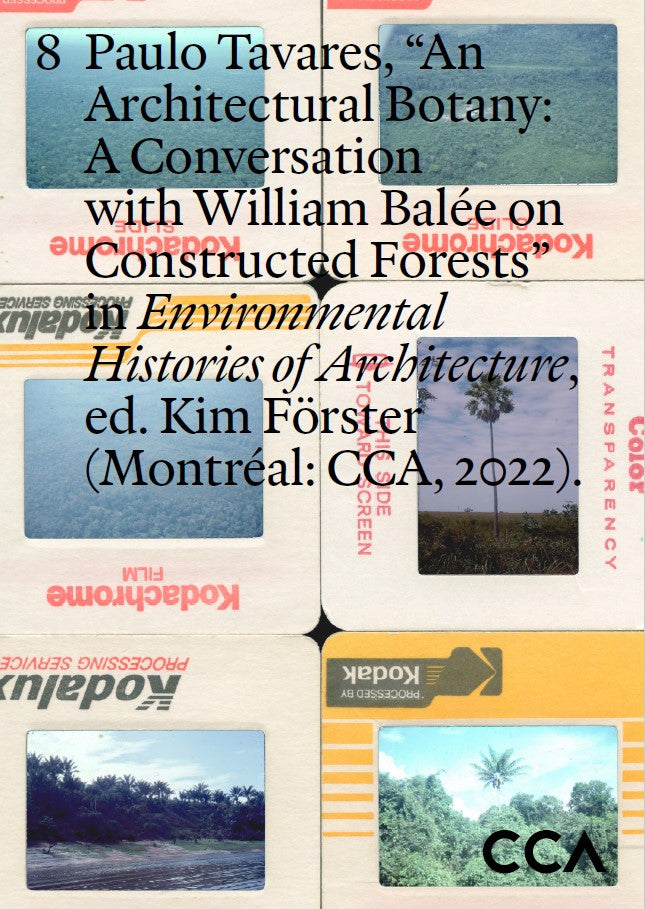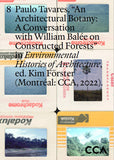Architectural Botany: A Conversation with William Balée on Constructed Forests
Architectural Botany: A Conversation with William Balée on Constructed Forests
Environmental Histories of Architecture presents the work of eight researchers who each analyze specific environmental relations, crises, and reforms and demonstrate how society and the environment have been co-constructed, represented, and lived in their respective geographies. While their essays are published independently as chapters, together they cover an expansive range of thinking about how the environment changed, and was changed by, architecture.
In Chapter 8, Paulo Tavares develops a postcolonial critique of Empire’s palm house and colonial-era plantations to frame an excavation of the ethno-botanical archive of American anthropologist William Balée. During an interview, Tavares and Balée discuss the plant diversity and formations in the Amazon region, documented by the latter in the 1980s. Through a research-based approach, that incorporates botany into architecture and vice versa, Tavares questions how institutions, both in the natural sciences and architecture, should build their archival collections. This critique is set within the context of Brazilian development policies that destroy Indigenous habitats, plants, and cultures with the backing of states and corporations that profit from rainforest deforestation—in forensic terms a crime against humanity and the environment.
Author: Paulo Tavares
Editor: Kim Förster
Managing Editor: Claire Lubell
Copyeditor: Lucas Freeman
Other contributors: Aleksandr Bierig, Nerea Calvillo, Daniel Barber, Kiel Moe, Jiat-Hwee Chang, Isabelle Doucet, Hannah le Roux, Kim Förster
Graphic Design: Tessier A
Programming: Rosen Tomov
Published by the CCA and distributed open access through Library Stack.
This open-access publication is made available according to the terms of the license CC BY-NC-ND.
Click here to download the PDF.
Add to cart to download the ePub.

